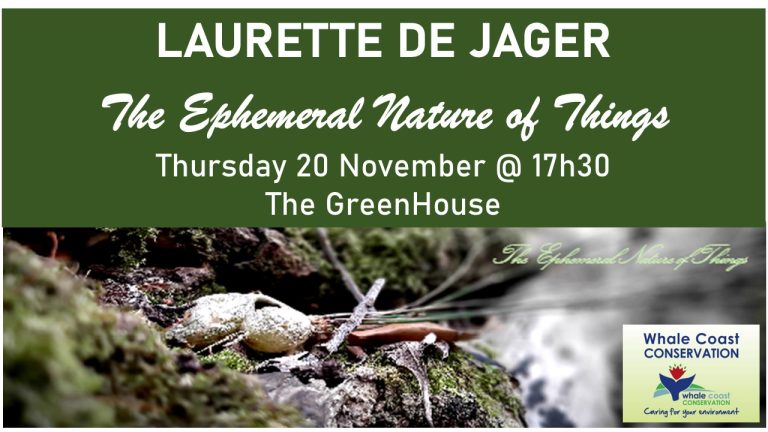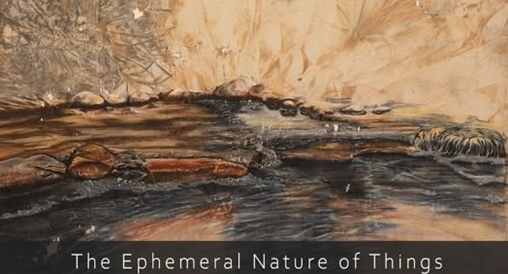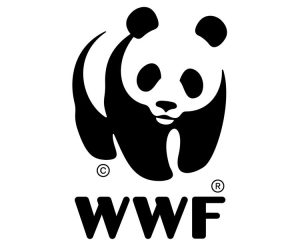Welcome to November month. “Here’s what’s been happening—and what’s ahead—in our world of conservation.”
In this issue
- Public talk by Laurette de Jager
- Wildlife talk summary
- Did we see Fireflies?
- Counting Whales.
We need your support
This newsletter comes to you free of charge. That applies to a lot of what we do, such as our extremely important eco-watch function, in which we monitor developments and government actions for environmental compliance and comment incisively on them. No-one pays us for protecting and rescuing chameleons. And we don’t get paid for writing our popular weekly column on nature that appears in The Village News.
We would love your support in this work. If you can afford to help to support our work with even a small amount – even better, make a small monthly contribution – then you can become a contributing member.
Your contributions will go directly to paying for our chameleon monitoring; or creating the newsletters and articles everyone can read for free, and protecting our natural environment from illegal exploitation.
Interested? Donations (once-off or recurring) can be made to our account: Nedbank Current Account 1345020716.
The worst that can happen if you donate is that we will be able to do more and the newsletters will become longer.
Talk by Laurette de Jager
A talk about finding artistic inspiration in nature.
Join artist Laurette de Jager as she takes us on a deeply personal and thought-provoking journey through her artistic process, The Ephemeral Nature of Things.
In this talk, Laurette explores how her art becomes a way of coping with solastalgia — the profound grief and disquiet we feel as the natural world changes around us. Through painting, photomontage, and direct collaboration with the earth itself, her work seeks to reconnect the human hand with the living landscape.
Her process is as poetic as it is unconventional. Laurette quite literally buries her canvases in the soil, allowing nature to participate in the creation. Fungi, mould, and minerals leave their mark; the earth becomes both collaborator and co-artist. From these buried canvases emerge fragile, textured surfaces enriched with pigments she has extracted from local soils — hues that carry the scent and colour of the Milkwood forests of Hermanus.
In The Ephemeral Nature of Things, Laurette shares not only her creative techniques but also the philosophy behind them. Her art questions permanence and control, celebrating instead the beauty of decay and the transient dance between human intention and natural forces. Each of her painting bears the imprint of time, weather, and living organisms — a meditation on fragility and impermanence in an age of ecological loss.
Through images, anecdotes, and open discussion, Laurette will reflect on her partnership with nature, her use of handmade earth pigments, and how these materials embody place and memory.
Come and be inspired by an artist who listens to the earth as much as she paints it — a voice for the land in all its vulnerability and resilience.


Report on talk by Mike Fabricius
Our speaker in October was Mike Fabricius, the Reserve Manager of Grootbos Private Nature Reserve.
The presentation highlighted the importance of conservation in the Overberg through tourism (that promotes conservation, and vice versa), research and monitoring.
Mike discussed the important role of fire in the fynbos, as well as alien plant management, as fire and alien management go hand in hand. ‘We actively burn strategic areas for ecological and safety reasons to prevent landscape scale fires, fuelled by alien plants and constant fire suppression that threaten ecosystems and livelihoods.’ He outlined the basics of planned burning and preparation- from fire breaks to mapping, backburning and collaboration as safe methods for reducing risk to ecology, community, tourism and in turn, livelihoods.
Mike shared information gathered in an ongoing wildlife study “Project Ingwe” conducted over the last 5 years. The project was inspired by the disappearance of a dominant male leopard they called “Madiba” who occupied a massive territory from the Klein River Mountains to Agulhas National Park.
The project uncovered important findings about the activity periods of animals, their occurrence in the landscape and their coexistence with people and other species. They also uncovered areas of ecological importance based on diversity scores and identified key ecological corridors.
Mike then highlighted all the species recorded during the survey, and we watched some recently gathered footage of a leopard mother and her cubs on Grootbos Private Nature Reserve.
Thank you to the Grootbos Foundation for the valuable conservation and research work being conducted across the Overberg in collaboration with all relevant conservation partners.


Walking with Fireflies
Fireflies were very accommodating of my advanced age this year. They put on a magnificent display right in the car park in Fernkloof.
We started off with a short tutorial about fireflies. How tiny our Luciola capensis beetle is – the size of a small grain of rice! Being insects, they undergo metamorphosis: eggs hatch into larvae, that spend a year under leaf litter just eating (slugs, snails and worms) to build up their energy store of ATP. When conditions are right, they pupate and the internal cells rearrange into an adult beetle. When the beetle emerges, it has only one thing on its mind – finding a mate to procreate.
Since it’s dangerous to fly during the day, some species of fireflies have evolved to fly at night. To find each other the fireflies also evolved to make their own light – bioluminescence. It’s a cold light produced in a very efficient process using the stored ATP as energy source. The pattern of flashing identifies the species of the firefly in the dark. A female waits low in the shrubbery while males fly overhead. If she likes the flash she sees, she will flash in reply and so it goes.
But a tiny body can only store so much ATP and producing a photon of light uses up so much energy, that their little ‘batteries’ soon run down.
Those females that were successful in their nuptials, soon lay a batch of eggs under damp leaf litter and the cycle starts again.
Then, at exactly the appointed time, the magic started to happen. The flashing lights, all around us, competed with stars for brilliance. What a sight! What a night!

Counting Whales
The University of Pretoria Mammal Research Institute Whale Unit reported as follows on the 2025 whale count along our southern shores.
This year’s survey recorded a relatively low number of females with calves compared to many previous years, continuing the cycle of peaks and dips in calving along our coast. The good news is that this may mean we can expect more whales with calves in the next years ahead.
What remains striking, however, is the very small number of whales without calves – males and non-calving females. This suggests that, unless they are pregnant and need sheltered waters to give birth, most southern right whales are staying far offshore. Since about 2009, we’ve seen this shift in migration: instead of returning to our coast in large numbers, many whales appear to spend more time feeding in the Southern Ocean, conserving their energy for reproduction.
the South African population of southern right whales is being squeezed by climate change in the Southern Ocean. Their reproductive slowdown is a clear biological signal of environmental disruption: fewer calves in Hermanus most likely means there is less food under the ice thousands of kilometres away.
This has two important implications. First, it highlights the vulnerability of whale populations. These animals face an uncertain future in a warming ocean. Second, it demonstrates the remarkable role whales can play as sentinels. By monitoring their health and behaviour, we gain insight into vast, remote ecosystems that are otherwise costly and difficult to study.
To better understand these changing migration patterns, we’ll be deploying satellite transmitters on selected whales in the coming weeks. These devices will allow us to follow their journeys in real time.
We thank our sponsors






